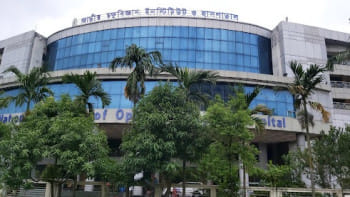One step forward, two steps back

Afghanistan is a dangerous place for women. According to a new global index developed by Georgetown Institute for Women, Peace and Security, and the Peace Research Institute of Oslo, Afghanistan is the second worst country for women in the world, after war-ravaged Syria, followed by Yemen. Domestic violence, sexual exploitation and honour killing are prevalent in the country, especially in the rural areas, which are still strong footholds of the tribal warlords and the Taliban.
According to the same index, 37 percent of Afghan women are illiterate, and a third of the female population are married off before they turn 18. Girls as young as 12 are often married off to older men, who are more often than not already married and have children of their own. Maternal mortality remains very high and in the rural areas, there are frequent reports of honour killings, perpetrated by kin.
Afghanistan is an even more dangerous place for women journalists. According to data of the Committee to Protect Journalists, seven female journalists were killed in Afghanistan between 2001 and 2018, five of them murdered. And the recent assassination of Meena Mangal, who was not only a renowned TV journalist but also a parliamentary adviser, only goes to show the vulnerable position of women in Afghanistan's society.
A week prior to her murder, Meena Mangal had even posted a message on her Facebook timeline saying she had received death threats, and still nothing was done by the law enforcement agencies to give her protection. Meena was shot dead in broad daylight and her killers have not yet been brought to book.
In 2006, Karen Fischer, a journalist of Deutsche Welle, was killed along with a colleague while out on a mission in Baghlan, about 95 miles northwest of Kabul. They were shot in the tent they had set up. Their personal possessions remained untouched by the murderers.
In a similar incident in 2014, Anja Niedringhaus, a photographer for the Associated Press, was shot dead in public, when a man walked up to her car, shouted "Allahu Akbar" and opened fire on her. What is disturbing is that this time it was a police officer who had committed the crime. The death penalty of the said police officer was later reduced to a 20-year jail term by the Supreme Court of Afghanistan.
Zakia Zaki, a middle-aged Afghan woman who had started the Peace Radio, was assassinated in 2007 by unidentified gunmen who had broken into her bedroom and shot her dead in her sleep. Her fault: she had not paid heed to the threats of the Taliban who had asked her to pull the plug on her radio station.
Journalists in general have to navigate a treacherous path in Afghanistan to bring out the actual news, and they are often the targets of militants. For women journalists though, the path is even more difficult, given that they are not only targeted just as journalists, but more so because they are female journalists.
Last year while talking to UN News, Sediqa Sherzai, news director of Radio-TV Roshani, a media outlet in the Kunduz province of Afghanistan, talked about the dangers her female colleagues have to face day in day out: "When insurgents seized Kunduz in 2015, they came immediately for our station because they didn't like our content focused on women's rights." She also said that her female colleagues are not only facing threats from insurgents, but also from the men in society who do not want women to work in the media industry.
Ever since the fall of the Taliban in 2001, the media industry in Afghanistan has witnessed a boom. Yet, female journalists still have to brave threats and abuse to carry on with their work. Mahsa, an Afghan journalist, recounts a tale of horror that she had to face to continue her work: "I have been threatened by the Taliban, corrupt authorities, warlords and even the government. But none of these threats will ever stop me from what I do."
According to International Media Support, 70 percent of female journalists in Afghanistan have been subjected to threats when reporting on sensitive issues including politics. The Afghan Journalists Safety Committee has said that they have taken measures to improve the safety of female journalists in the country, including creating a team that helps female journalists and supports them. They are also collaborating with women's organisations to facilitate the work of female journalists.
Last year, on the occasion of World Press Freedom Day, in a similar tone, United Nations Assistance Mission in Afghanistan's (UNAMA) chief, Tadamichi Yamamoto, said that the United Nations was continuing to push the Afghan government "to implement measures to improve journalist safety and foster an open media where no voice is silenced through fear."
In a country like Afghanistan, where the Taliban has systematically and often violently deconstructed the fabric of a society which had previously been relatively inclusive, female journalists today have to walk down a perilous path to bring out real-life stories. And the government must take a strong stance to support female journalists in their work by formulating policies and enacting laws that will support their work.
The gender-exclusive and misogynist mindset enforced by the Taliban must not go unchallenged. The people in power must come forward to the aid of these female journalists, so that these brave women no longer have to live in fear for their lives. So that they can fearlessly go out there and break stories without having to dodge sinister bullets. But can the current Afghan government create such a society?
Tasneem Tayeb works for The Daily Star. Her Twitter handle is @TayebTasneem.

 For all latest news, follow The Daily Star's Google News channel.
For all latest news, follow The Daily Star's Google News channel. 



Comments